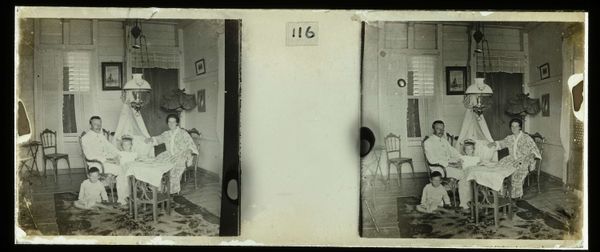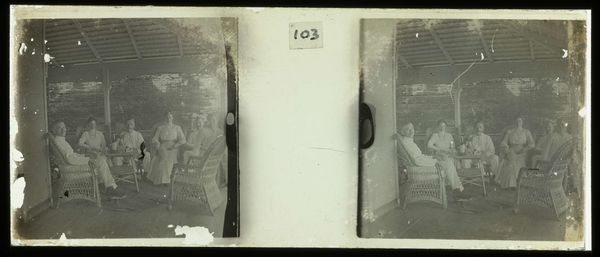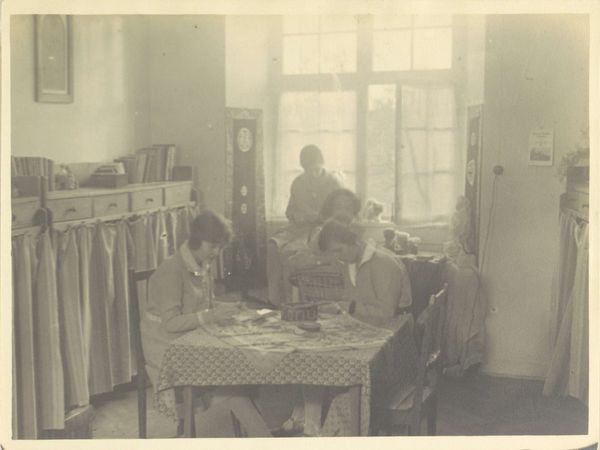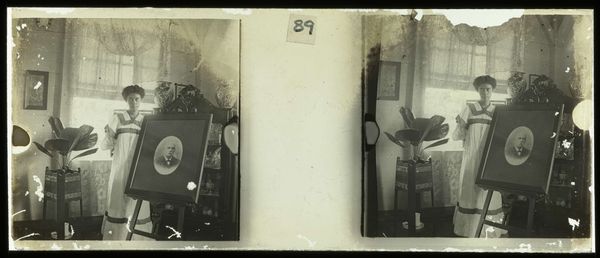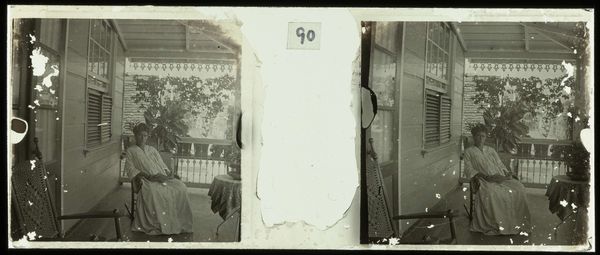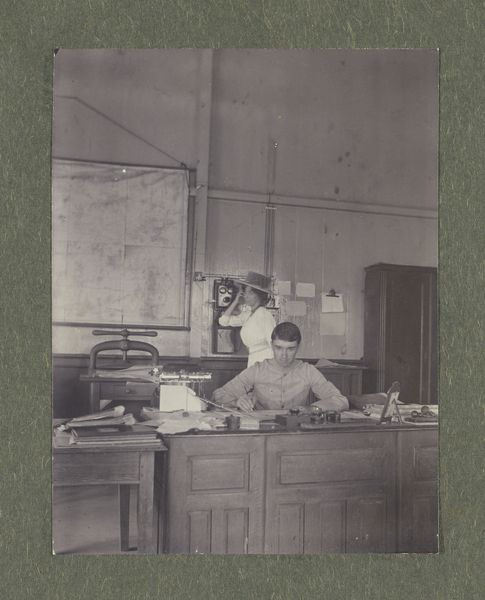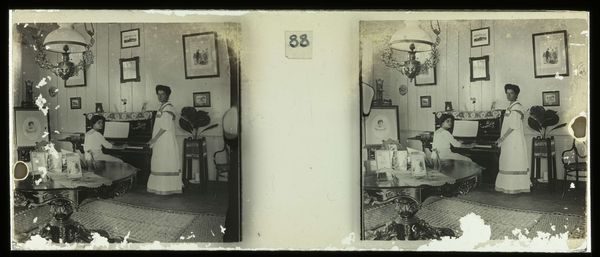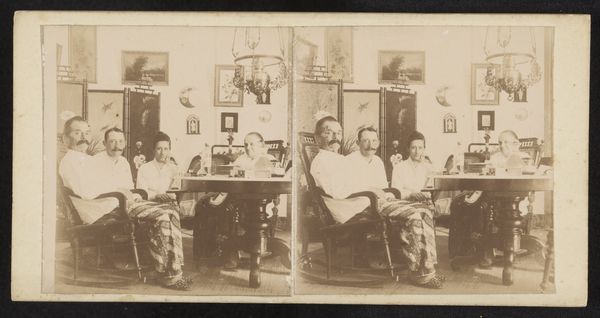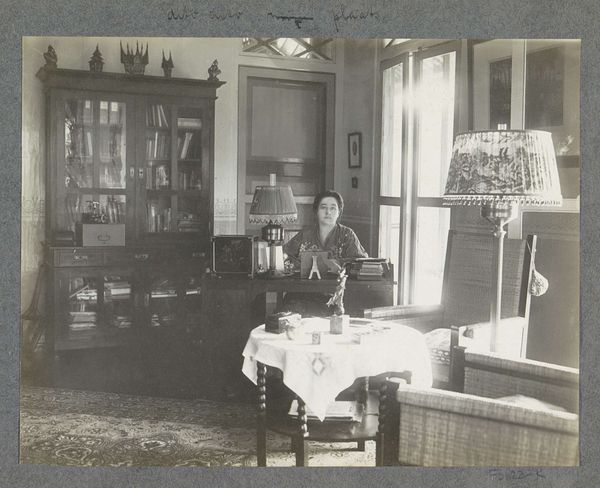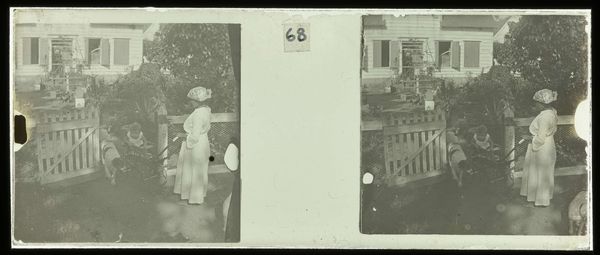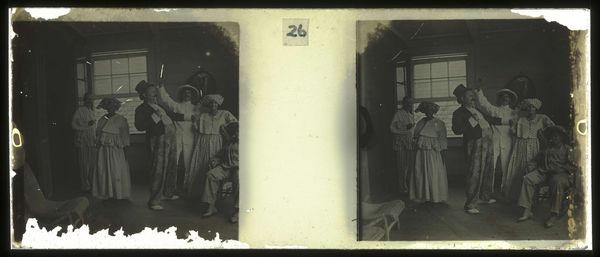
photography, gelatin-silver-print
#
portrait
#
ink painting
#
photography
#
gelatin-silver-print
#
genre-painting
#
watercolor
#
realism
Dimensions: height 4.5 cm, width 10.5 cm
Copyright: Rijks Museum: Open Domain
This stereograph, Plantage Accaribo, was made by Theodoor Brouwers sometime between 1875 and 1932, using gelatin silver print on glass. In this double image, we see a domestic scene, likely on a plantation, captured with the then-popular stereograph technique, designed to give a three-dimensional impression. Beyond its aesthetic qualities, this photographic method speaks volumes about the means of production. Think about the labor involved: from the cultivation of materials for the photographic paper to the darkroom processes. The image's materiality, its very existence as a gelatin silver print on glass, hints at the complex colonial economy of the time. Stereographs were not just art; they were commodities, reflecting broader issues of labor, class, and consumption. The apparent simplicity of the image belies the layers of social and cultural significance embedded within its making. Recognizing the importance of materials, making, and context allows us to challenge traditional distinctions between fine art and craft, revealing the interconnectedness of art and society.
Comments
No comments
Be the first to comment and join the conversation on the ultimate creative platform.
